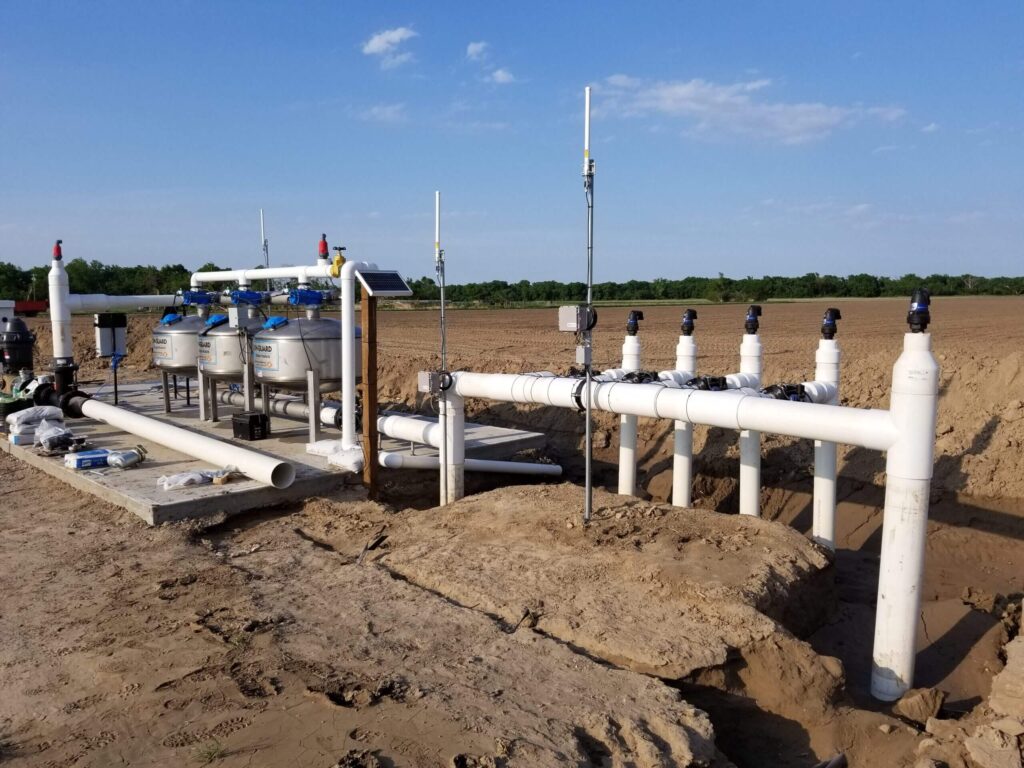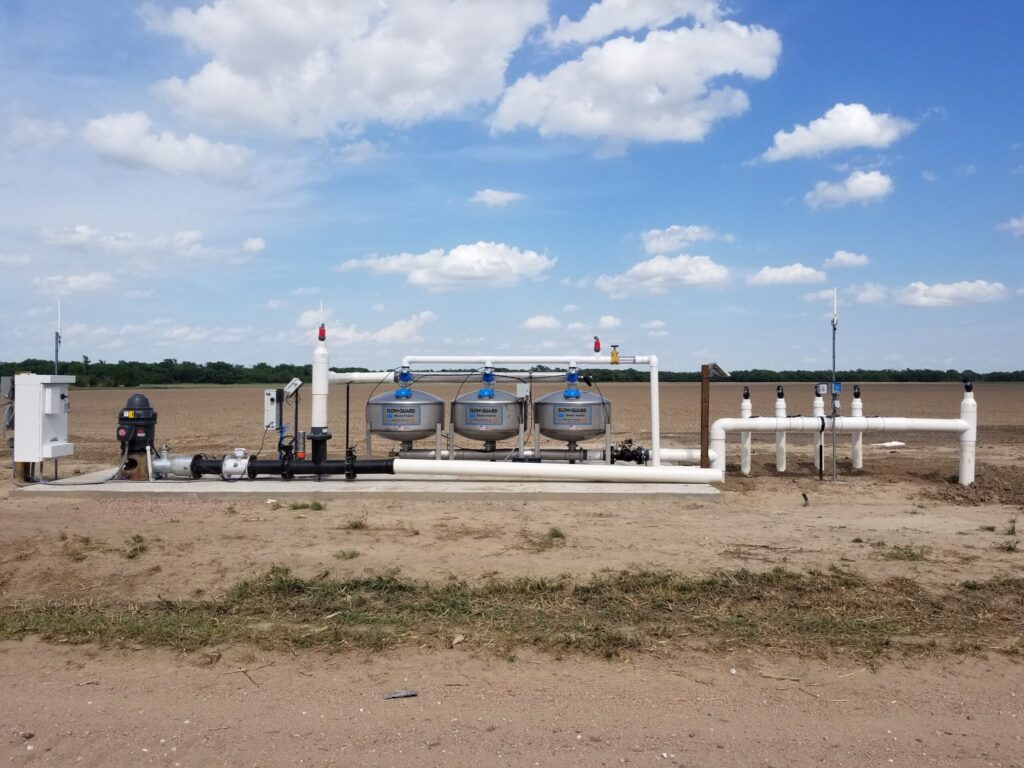Designing Subsurface Drip Irrigation Systems: Common Mistakes to Avoid
Designing Subsurface Drip Irrigation Systems: Common Mistakes to Avoid
Subsurface drip irrigation (SDI) has revolutionized modern agriculture, delivering water and nutrients directly to crop root zones with unprecedented precision. This technology promises reduced water waste, improved crop yields, and enhanced soil health. However, even the most advanced irrigation systems can fail to deliver on their potential when design flaws undermine their effectiveness. Poor planning and execution can lead to uneven water distribution, increased maintenance costs, and compromised crop performance. Understanding these common pitfalls is essential for farmers, growers, and agricultural professionals who want to maximize their investment and achieve long-term success with subsurface drip irrigation systems.
The stakes are higher than many realize. A poorly designed subsurface drip system doesn’t just waste water—it can create soil compaction, promote disease conditions, and result in costly repairs that could have been prevented. By identifying and avoiding these critical mistakes during the design phase, you can ensure your SDI system operates efficiently for years to come while supporting sustainable farming practices.
Mistake 1: Ignoring Soil Type and Field Variability
Understanding Soil Properties
Different soil types—clay, sandy, or loamy—dramatically influence how water moves through the ground, yet many system designers apply a one-size-fits-all approach that ignores these fundamental differences. Clay soils hold water longer and may require wider drip line spacing to prevent waterlogging, while sandy soils drain quickly and need closer spacing to ensure adequate coverage.
Mapping Field Variability
Assuming uniform soil conditions across an entire field is one of the most costly mistakes in SDI design, as most agricultural land contains varying soil types, drainage patterns, and topographical features that affect water movement. Professional soil mapping and testing at multiple locations helps identify these variations so you can adjust drip line depth, spacing, and flow rates accordingly.
Customizing System Design
A well-designed SDI system adapts to real-world field conditions rather than forcing uniform specifications across diverse soil types, which means adjusting installation depth, emitter spacing, and flow rates to match the water-holding capacity and infiltration characteristics of each soil zone. This might involve installing drip lines at different depths within the same field—shallower in clay soils to prevent anaerobic conditions and deeper in sandy soils to reduce evaporation losses—while ensuring that pressure compensating emitters maintain consistent flow rates regardless of minor elevation changes or pressure variations throughout the system.

Mistake 2: Poor Filtration and Inadequate Water Quality Management
Clogging Hazards
Emitter clogging is the leading cause of SDI system failure, with minerals, algae, organic debris, and sediment particles creating blockages that can render entire zones inoperative within a single growing season. Iron, calcium, and magnesium deposits commonly found in well water can precipitate inside drip lines, while organic matter like algae and bacteria form biofilms that gradually restrict water flow.
The Role of Filtration Systems
Effective water treatment requires a multi-stage approach that addresses different types of contaminants through sand media filters for removing organic matter, disc filters for catching particles, and screen filters for final polishing of the water supply. Sand filters excel at removing algae and organic debris while also providing some biological filtration, disc filters trap particles in the 80-200 mesh range, and screen filters provide the final barrier against fine sediments that could clog emitters.
Water Quality Testing
Regular water analysis should be conducted at least annually—or more frequently if you notice changes in water appearance, taste, or system performance—to monitor pH levels, dissolved minerals, bacterial counts, and suspended solids that can impact system longevity. Understanding your water’s iron content, hardness levels, and biological activity helps you choose appropriate chemical treatments, adjust filtration protocols, and schedule maintenance activities before problems develop.
Mistake 3: Incorrect Drip Line Depth and Placement
Too Shallow vs. Too Deep
Installing drip irrigation system lines too close to the surface increases evaporation losses and makes the system vulnerable to damage from cultivation equipment, while placing them too deep can create uneven wetting patterns and make it difficult for plant roots to access the moisture.
Crop-Specific Needs
Different crops require different drip line placement strategies based on their root development patterns, with shallow-rooted vegetables needing lines installed 8-12 inches deep while deeper-rooted crops like almonds or grapes may require placement at 18-24 inches below the surface.
Precision Installation
Modern SDI installation relies on GPS mapping and laser-guided trenching equipment to ensure consistent depth and accurate positioning that matches your field’s design specifications. These technologies eliminate the guesswork from installation, maintaining precise depth control even across varying terrain while creating the smooth, consistent trenches necessary for proper drip line performance.
Mistake 4: Overlooking System Hydraulics and Pressure Balance
Uneven Distribution
Poor hydraulic design creates pressure variations that result in some areas receiving too much water while others remain under-irrigated, leading to inconsistent crop development and reduced overall yields. When pressure drops occur due to inadequate pipe sizing or excessive system length, emitters at the far end of the system may barely function while those near the pump deliver excessive flow rates.
Pipe Sizing and Layout
Proper pipe sizing requires careful calculation of flow rates, friction losses, and pressure requirements to ensure uniform water distribution throughout the entire system, with main lines and sub-mains sized appropriately to handle peak demand without excessive pressure loss. The layout should minimize the number of fittings and direction changes that create turbulence and pressure drops, while strategically placing pressure regulators and flow control devices to maintain optimal operating conditions.
Monitoring Pressure
Installing pressure gauges at key points throughout the system allows you to monitor hydraulic performance and quickly identify problems before they impact crop production, with pressure regulators maintaining consistent operating pressure despite fluctuations in the supply system.

Mistake 5: Neglecting Long-Term Maintenance in the Design Phase
Designing for Easy Access
Building serviceability into your SDI system from the beginning saves countless hours and dollars in future maintenance costs, with strategically placed access points, flush valves, and service connections that allow easy cleaning and inspection of the entire system. Design considerations should include valve boxes positioned for easy access, main lines installed with sufficient cover to prevent damage while remaining accessible for repairs, and flush connections at the end of each zone to facilitate regular cleaning.
Maintenance Protocols
Establishing regular maintenance schedules for flushing lines, inspecting and cleaning filters, and monitoring system performance helps prevent small problems from becoming major failures that require costly repairs or complete system replacement. Weekly filter inspections during peak irrigation season, monthly system flushing to remove accumulated debris, and annual comprehensive system evaluation should be planned into your operation’s routine maintenance schedule.
Training Farm Staff
Investing in proper training for the people who will operate and maintain your SDI system ensures that routine maintenance tasks are performed correctly and that problems are identified early when they’re easier and less expensive to fix. Well-trained staff can recognize the signs of emitter clogging, filter saturation, and pressure irregularities that indicate developing problems, while also understanding the importance of proper chemical injection procedures and system startup and shutdown protocols.
Mistake 6: Failing to Integrate Fertigation Properly
Nutrient Delivery Potential
Fertigation through SDI systems offers unparalleled precision in nutrient delivery, allowing farmers to supply exactly the right amount of fertilizer directly to the root zone when plants need it most, but this potential is only realized when the system is designed with fertigation capabilities in mind from the beginning.
Compatibility Issues
Chemical precipitation and incompatibility between different fertilizers can create serious clogging problems in SDI systems, making it essential to understand the chemical interactions between your water supply, chosen fertilizers, and system materials before implementing fertigation practices. Common problems include iron and phosphorus precipitation in high-pH water, calcium and sulfate reactions that create gypsum deposits, and organic fertilizers that promote bacterial growth within the system.
Timing and Application Strategy
Successful fertigation requires careful coordination between plant nutrient demands, soil conditions, and irrigation scheduling to maximize nutrient uptake while minimizing waste and environmental impact. Different growth stages require different nutrient ratios and application timing, with young plants needing readily available nutrients delivered frequently in small doses, while mature crops may benefit from less frequent applications of higher concentrations.
Mistake 7: Skipping Professional Design and Consultation
DIY Risks
While the appeal of designing your own SDI system may seem cost-effective initially, the complexity of hydraulic calculations, soil analysis, and system integration often leads to expensive mistakes that could have been avoided with professional expertise. Common DIY errors include undersized pumps, incorrect pipe sizing, inadequate filtration, and poor hydraulic balance that results in uneven water distribution and premature system failure.
Value of Expertise
Professional irrigation designers bring years of experience and specialized knowledge that allows them to account for field-specific details that inexperienced designers often overlook, including local soil conditions, climate factors, crop requirements, and regulatory considerations that affect system design and performance.
Cost vs. Investment
While professional design services require an upfront investment, the long-term benefits of a properly engineered system far outweigh the initial costs through improved water efficiency, reduced maintenance requirements, and enhanced crop performance that increases overall profitability. A well-designed system typically pays for itself within 2-3 years through water savings, reduced labor costs, and improved yields, while poorly designed systems often require expensive modifications that can exceed the cost of professional design services.

Western Irrigation: Your Partner in Getting It Right
Who They Are
Western Irrigation has established itself as a trusted leader in modern irrigation solutions since 1985, with a team of authorized dealers, designers, and installers who understand the complexities of SDI system design and installation. Their decades of experience working with diverse crops, soil conditions, and climate challenges throughout the region gives them unique insights into what works and what doesn’t in real-world applications.
Tailored System Design
Every farm presents unique challenges that require customized solutions, and Western Irrigation’s expert staff takes the time to evaluate your property using GPS tracking to map elevation changes, terrain variations, and soil conditions that affect system design. Their systematic approach ensures that every aspect of your SDI system is optimized for your specific crops, soil types, and operational requirements, rather than applying generic solutions that may not perform well in your particular situation.
Ongoing Support and Training
Western Irrigation believes in creating long-lasting relationships with customers through comprehensive support that extends well beyond system installation, including training programs that help farm staff understand proper operation and maintenance procedures. They provide prompt customer service with same-day call returns and 24-hour estimate turnaround times, ensuring that you receive the support you need when you need it.
Building SDI Systems That Deliver Results
The difference between a successful SDI system and a costly failure often comes down to avoiding the common mistakes outlined above. From understanding soil variability and water quality challenges to ensuring proper hydraulic design and planning for long-term maintenance, each element requires careful consideration and professional expertise.
Success with subsurface drip irrigation requires more than just installing equipment—it demands a comprehensive understanding of soil science, hydraulics, crop physiology, and system integration that comes from years of experience and continuous learning. Take the time to invest in proper design, quality components, and professional installation. Your crops, your budget, and your long-term success depend on getting it right from the start.
